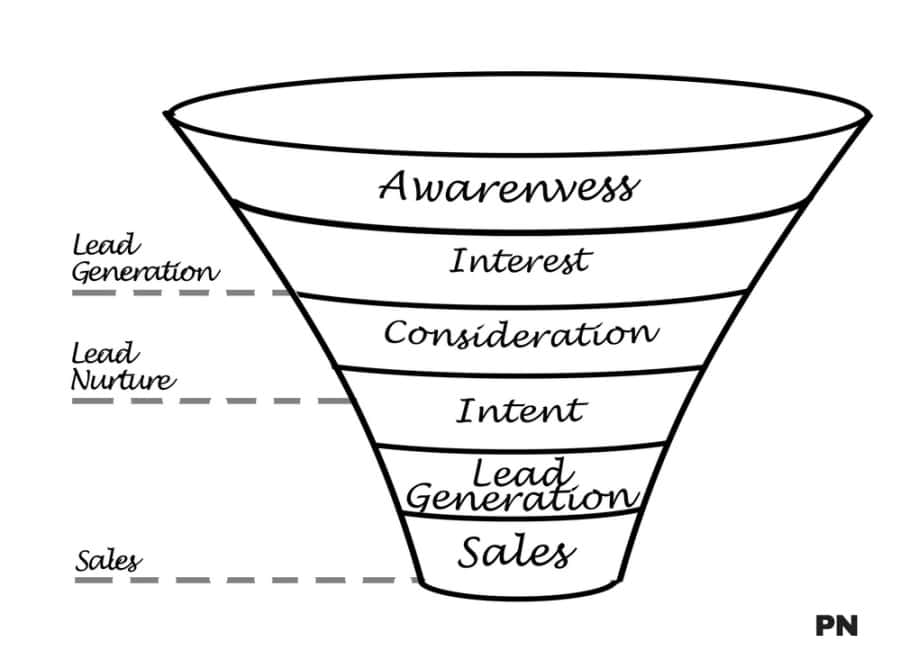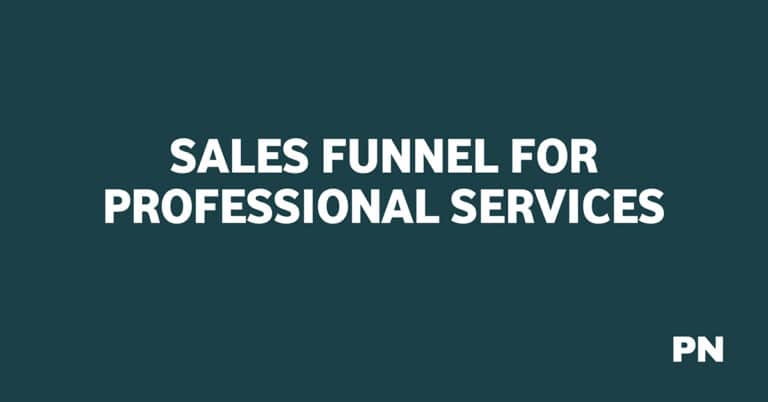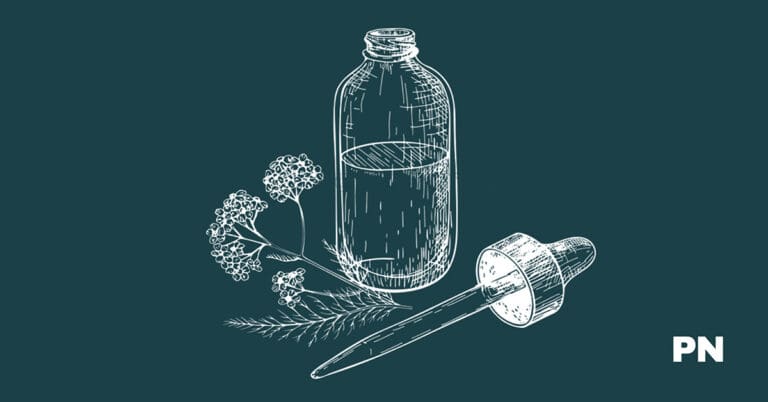Sales Funnel for Digital Products Guide

Are you looking to sell digital products online?
If so, you need to understand the concept of a sales funnel. A sales funnel is a series of steps that guide potential customers through purchasing. By creating a well-designed sales funnel, you can increase your chances of converting leads into paying customers.
One common myth about sales funnels is that they are only valid for physical products. However, this couldn’t be further from the truth. Sales funnels are just as effective for digital products, such as online courses, e-books, and software.
A well-designed sales funnel is crucial for success in the competitive world of e-commerce.
To create an effective sales funnel for digital products, you need to understand the unique challenges of digital marketing.
Unlike physical products, digital products are intangible and can’t be seen or touched. Therefore, it’s best to find creative ways to build trust and credibility with potential customers. In the following sections, I’ll explore the key considerations for creating a successful sales funnel for digital products.
What is a Digital Product Sales Funnel?
A digital product sales funnel is a series of steps that guide potential customers through purchasing.
It is crucial for turning leads into paying customers. The main goal of a digital product sales funnel is to build trust with potential customers, educate them about your product, and ultimately persuade them to make a purchase.
A typical digital product sales funnel comprises four main stages: awareness, interest, decision, and action. Each stage has its own set of objectives and tactics designed to move potential customers through the funnel.
The Four Stages of a Digital Product Sales Funnel
1. Awareness
The awareness stage is the first step in the funnel. At this stage, potential customers become aware of your product or service. Your goal is to get their attention and introduce them to your product. This can be done through various marketing channels, such as social media, email, and advertising.
2. Interest
Once potential customers know about your product, the next step is generating interest. At this stage, you want to educate potential customers about its benefits and how it can solve their problems. This can be done through content marketing, such as blog posts, videos, and webinars.
3. Decision
In the decision stage, potential customers decide whether or not to purchase your product. At this stage, you want to give them all the information they need to make an informed decision. This can be done through product demos, case studies, and customer reviews.
4. Action
The final stage of the funnel is action. This is where potential customers make a purchase. At this stage, you want to make purchasing as easy as possible. This can be done by providing a clear call-to-action and a simple checkout process.
Why You Need an Online Course Sales Funnel?
You need an online course sales funnel to sell digital products, such as online courses. A sales funnel is a marketing strategy that guides potential customers through a series of steps to purchase your product.
Without a sales funnel, you’re leaving money on the table. A sales funnel can help you increase your revenue and brand awareness.
Here are some reasons why you need an online course sales funnel:
1. Helps you to sell more digital products
An online course sales funnel can help you sell more digital products. By guiding potential customers through a series of steps, you can increase their chances of purchasing your product.
2. Builds brand awareness
A sales funnel can help you build brand awareness. Creating a series of touchpoints with potential customers can increase your brand’s visibility and credibility.
3. Targets your ideal customer
An online course sales funnel helps you to target your perfect customer. By creating a series of steps that lead potential customers to purchase your product, you can ensure that your product is reaching the right audience.
4. Provides valuable data
A sales funnel can provide you with valuable data about your customers. By tracking their behavior and actions, you can gain insights into what works and doesn’t work in your sales funnel. This data can help you to optimize your sales funnel and increase your revenue.
Stages of the Digital Products Sales Funnel
Having a well-structured sales funnel is crucial when selling digital products. A sales funnel is a series of steps that guide potential customers through purchasing. This section will explore the different stages of a digital product sales funnel and provide tips on optimizing each stage.

The Awareness Stage (Top of the Funnel, TOFU)
The awareness stage is the first stage of the digital product sales funnel. At this stage, potential customers become aware of your product or service. This could be through social media, search engines, or other marketing channels.
This stage aims to capture your target audience’s attention and generate interest in your product.
You should create relevant and engaging content for your target audience to optimize this stage. This could be blog posts, social media posts, or videos. By providing valuable content, you can establish yourself as an authority in your niche and build trust with your audience.
The Consideration/Evaluation Stage (MOFU)
The consideration/evaluation stage is the second stage of the digital product sales funnel. At this stage, potential customers evaluate your product and consider whether or not to make a purchase. This stage aims to provide information to help potential customers make informed decisions.
To optimize this stage, you should provide detailed information about your product. This could be in the form of product descriptions, customer reviews, or case studies. By providing this information, you can address potential customers’ concerns or objections and help them decide.
Purchase Stage (Bottom Of The Funnel)
The purchase stage is the final stage of the digital product sales funnel. At this stage, potential customers have decided to make a purchase. This stage aims to make purchasing as easy and seamless as possible.
To optimize this stage, you should focus on streamlining the purchasing process. This could be by providing a clear and simple checkout process, multiple payment options, or excellent customer support.
Post-Purchase Stage
The post-purchase stage is often overlooked but is crucial for building customer loyalty. At this stage, you should provide excellent customer support and follow up with customers to ensure their satisfaction.
To optimize this stage, you should focus on providing excellent customer support. This could be by providing a knowledge base, offering live chat support, or providing a dedicated support team.
Repeat Purchase Stage
The repeat purchase stage is the ultimate goal of any sales funnel. At this stage, you should focus on building customer loyalty and encouraging repeat purchases.
To optimize this stage, you should focus on providing excellent customer service and offering incentives for repeat purchases. These could be loyalty programs, discounts, or exclusive content.
Having a well-structured sales funnel is crucial for selling digital products. By optimizing each stage of the sales funnel, you can increase your chances of success and build a loyal customer base.
How Do I Create a Digital Product Sales Funnel?
Creating a digital product sales funnel requires a strategic approach to target the right audience and deliver value to your customers.
Here are the steps you should follow to create a successful digital product sales funnel:
- Identify your target audience: The first step in creating a digital product sales funnel is to identify your target audience. You need to know who your product is for, their pain points, and how it can solve their problems. This will help you create a targeted marketing campaign that resonates with your audience.
- Create a lead magnet: A lead magnet is a valuable content you offer your audience in exchange for their contact information. This could be an ebook, a webinar, or a free trial of your product. The goal is to provide something of value to your audience and capture their contact information so that you can continue to nurture them through the funnel.
- Create a landing page: A landing page is a dedicated page on your website designed to convert visitors into leads. It should be optimized for conversions, with a clear call to action and a compelling offer. It should also be tailored to your target audience, with messaging directly addressing their pain points.
- Create a thank you page: After someone opts into your lead magnet, they should be redirected to a thank you page. This page should thank them for opting in and provide them with the next steps. You can also use this page to upsell them on your product or offer additional resources.
- Create a nurture sequence: Once someone opts into your lead magnet, you should send emails designed to nurture them through the funnel. These emails should provide value, build trust, and position your product as the solution to their problem. You can also use these emails to segment your audience and send targeted offers based on their interests.
- Create a sales page: Your sales page is where you will pitch your product and make the sale. This page should be optimized for conversions, with a clear call-to-action and a compelling offer. It should also address your audience’s objections and provide social proof to build trust.
By following these steps, you can create a digital product sales funnel that delivers value to your audience and drives sales for your business. Remember to test and optimize your funnel over time to ensure it performs at its best.
What is The Best Funnel Software for Digital Products?
Many entrepreneurs choose ClickFunnels as the best funnel software for digital products. It is an all-in-one sales funnel software that helps businesses easily build and optimize their sales funnels.
Here’s why ClickFunnels is the best sales funnel software for digital products:
Digital Products Features
ClickFunnels offers a wide range of features specifically designed for digital products. With ClickFunnels, you can easily create and sell digital products such as ebooks, courses, and software.
The software also allows you to offer your customers freebies, upsells, and downsells, which can help increase your revenue.
Free Funnel Templates
ClickFunnels offers a variety of complimentary funnel templates that are specifically designed for digital products. These templates make it easy for entrepreneurs to create high-converting sales funnels without technical skills or experience.
The templates are fully customizable, so you can easily add your branding and content.
Shopping Cart and Checkout
ClickFunnels has a built-in shopping cart and checkout system that makes it easy for customers to purchase your digital products. The checkout process is simple and streamlined, which can help increase your conversion rates.
CRM and Analytics
ClickFunnels also offers a powerful CRM and analytics system that allows you to track your customers’ behavior and optimize your sales funnel accordingly. The software also integrates with popular analytics tools such as Google Analytics and Facebook Pixel.
Frequently Asked Questions
What is a funnel in the digital products business?
A sales funnel visually represents the customer journey from initial product awareness to final purchase. It is a series of steps that guide potential customers through the purchase process, and it is crucial for turning leads into paying customers.
What are the key stages in developing a digital product sales funnel?
The key stages in developing a digital product sales funnel are awareness, interest, decision, and action. In the awareness stage, potential customers become aware of your product or service.
Potential customers become interested in your product or service in the interest stage.
In the decision stage, potential customers decide to purchase your product or service. In the action stage, potential customers take action and make the purchase.
How do you create an effective digital product sales funnel?
To create an effective digital product sales funnel, you need to understand your target audience, create compelling content, and optimize your funnel for conversion. You should also ensure your website and landing pages are mobile-friendly and easy to navigate.
How can I optimize my digital products funnel for higher conversion rates?
To optimize your digital products funnel for higher conversion rates, you should use A/B testing to determine what works best for your target audience. You should also use analytics to track your funnel’s performance and make changes accordingly.
It would be best if you focused on providing excellent customer service and following up with customers after they purchase.
What metrics are crucial for analyzing the performance of a digital product funnel?
The metrics that are crucial for analyzing the performance of a digital product funnel include conversion rate, bounce rate, time on page, and exit rate. These metrics can help you identify areas where your funnel may be underperforming and make changes accordingly.
How do industry benchmarks influence digital product conversion funnel performance?
Industry benchmarks can provide valuable insights into how your digital products conversion funnel performs relative to your competitors.
By comparing your funnel’s performance to industry benchmarks, you can identify areas where you may be underperforming and make changes accordingly. Additionally, industry benchmarks can help you set realistic goals for your funnel’s performance.
Wrapping Up
Congratulations! You now have a solid understanding of sales funnels for digital products. By following the steps outlined in this guide, you can create an effective sales funnel that will help you turn leads into paying customers.
Remember, providing value at every customer journey stage is the key to a successful sales funnel. From the initial awareness stage to the final purchase, your goal should be to build trust and establish a relationship with your prospects.
Here are some key takeaways to keep in mind:
- Your sales funnel should be tailored to your specific product and target audience.
- Each stage of the funnel should provide value and build trust with your prospects.
- Testing and optimization are crucial to improving your funnel’s performance.
- Don’t forget to track your metrics and analyze your results to make data-driven decisions.
By implementing these strategies, you can create a sales funnel that consistently generates leads and converts them into paying customers. Good luck!
Disclosure: We may earn commissions if you buy via links on our website. Commissions don’t affect our opinions or evaluations. We’re also an independent affiliate of many platforms, including ClickFunnels, Kartra, GoHighLevel, Podia, Northwest Registered Agent, and others. We’re not employees of these services. We receive referral payments from them, and the opinions expressed here are our own and are not official statements of these companies.






